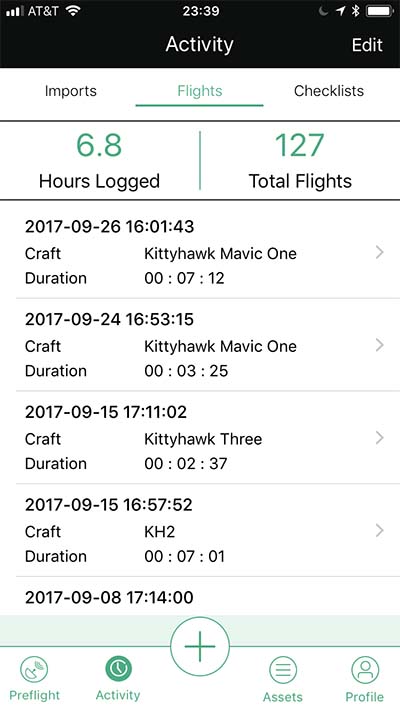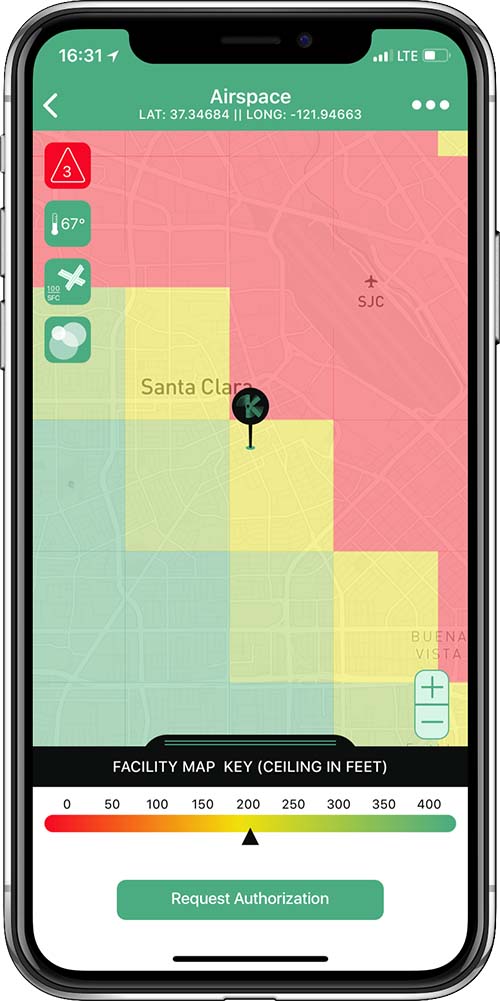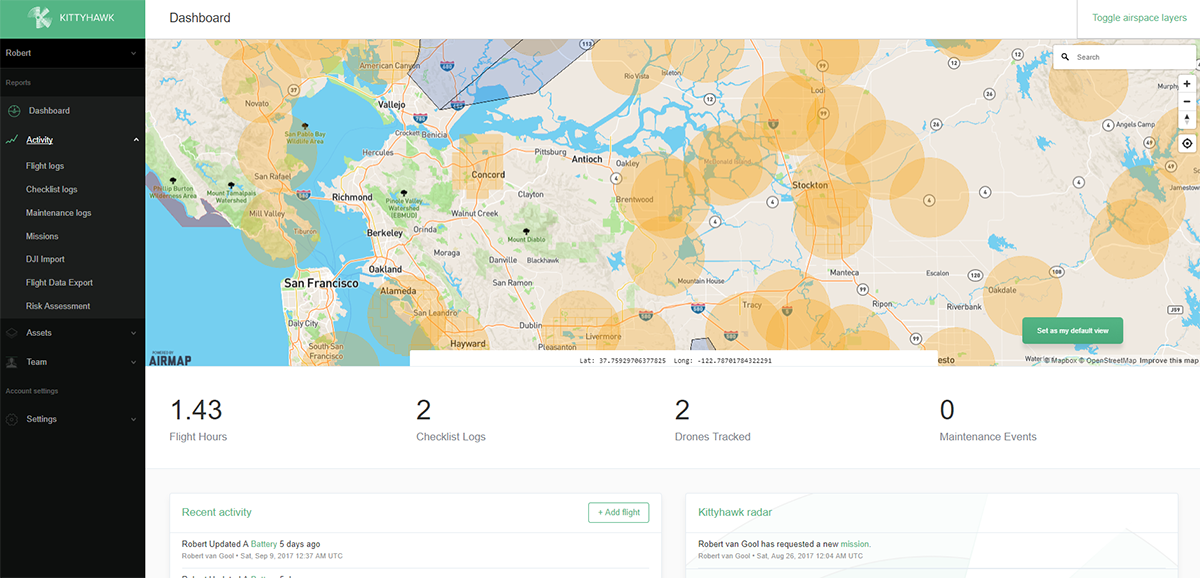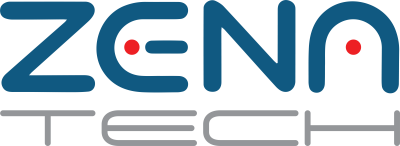The first half of 2018 saw some major announcements from Kittyhawk, the company dedicated to unifying the mission, aircraft, and data to empower safe and effective drone operations. New features that enabled drone operators to conduct automated flights were announced at the very beginning of the year, while their collaboration with Jeppesen has enabled them to take LAANC to a whole new level. As it turns out though, those updates were just the primer for what they had in store.
In early June, Boeing announced their
investment in Kittyhawk through Boeing HorizonX Ventures, which is the venture capital arm of the company. Boeing clearly views this as something much more than an investment though, as they’ve talked about how the platform will help shape the future of safe autonomous flight, while also enabling an integrated approach to a safe autonomous ecosystem. It’s a development that should help to drive the creation of an unmanned traffic management (UTM) system that Kittyhawk and their
ever-growing team will help define, even as they make renewed efforts to ensure their current customers
can find success with drones and calculate the ROI associated with their adoption of the technology.

Kittyhawk co-founders Jon Hegranes and Joshua Ziering
To get a better sense of what all these developments mean for Kittyhawk in the present and future, we caught up with Kittyhawk co-founders Joshua Ziering and Jon Hegranes. We discussed what it means to have Boeing invest in the company, what kind of challenges enterprise users of all types face, why we need to redefine the “R” when it comes to the ROI for drones, and much more.
Jeremiah Karpowicz: Congratulations on the recent investment from Boeing HorizonX Ventures! What does it mean to you to get this investment from Boeing, as opposed to an organization without an interest or history in aviation?Joshua Ziering: The validation it represents is huge. This is the largest aerospace company in the world validating a start-up that's been working on unmanned aircraft systems. That was really important for us. There's plenty of strategic money out there, but we were looking for a partner that would help us capture the value of what we're building. Having the buy in from a company like Boeing really helps validate our use cases and bring legitimacy to what we're doing.
Jon Hegranes: The big difference in terms of it being Boeing is something you can see on the operational side. Boeing has amazing subsidiaries that have awesome technologies applicable to the UAV space along with a growing portfolio that we’re going to be able to work closely with. Working with them means it’s not going to be about dreams or possibilities, and it’s really going to positively impact the product we deliver.
I wanted to ask about some of the specifics associated with that product, especially since you’re not focused on any one single commercial application of drone technology. That being the case, what can you say about the challenges that operators across a variety of industries run into? Are these issues distinct to certain markets/applications?Joshua Ziering: We see a very common set of problems across enterprise drone programs. People sometimes ask me if it’s weird to be talking to a SWAT team one minute, and then to a railroad inspector the next. It’s not, because everybody is really trying to solve the same issues. How do they make sure everyone is flying safely and compliantly? How do they create an easily scalable culture of safety in their organization? How can they make sure the technology is actually making everyone safer?
It’s the reason that Kittyhawk's products support all of the processes necessary to run an enterprise drone operation. We do everything from pre-flight planning, risk assessment, checklists, airspace automated flights...it's all there. If you have a drone program, you’re going to have issues with all of these things, and Kittyhawk solves all of them.
Jon Hegranes: We deal with a variety of industries, but the breakout around how drones are being used across an organization are more similar than you might think. Big companies are going to need to check some specific boxes related to safety, marketing, inspection and plenty more, and we’ve been able to work through those challenges with all of those users. At the same time though, we're developing more and more unique-focused functionality for many of these verticals because some of these users want to do more with their data inside the Kittyhawk platform.
 What users want to do with their data is typically an issue related to ROI, as the efforts to quantify exactly how much efficiency an enterprise is creating thanks to their use of drone technology are more pervasive than ever. What approach have you encouraged your users to take when it comes to calculating the ROI of their drone program? Joshua Ziering
What users want to do with their data is typically an issue related to ROI, as the efforts to quantify exactly how much efficiency an enterprise is creating thanks to their use of drone technology are more pervasive than ever. What approach have you encouraged your users to take when it comes to calculating the ROI of their drone program? Joshua Ziering: It's interesting, because when you talk about ROI, everyone immediately goes to capital. Capital in, capital out, but there are other metrics that directly impact the ROI of the drone programs. That’s part of the reason we might need to reframe the way we think about that "R".
I’ll give you an example. A construction company that had been using drones on their site did an impromptu traffic study after taking survey of their employees and finding out that their biggest frustrations had to do with sitting in their cars for 20 minutes at the end of the day, because everybody was trying to get out of the parking lot at the same time. They used the drone to figure out how to eliminate that traffic bottleneck, and then people were able to get home 20 minutes earlier. That was a huge win for the company.
Now, are you able to put dollars and cents into that? Not directly, but what does it do for company morale and employee happiness when people don't have to sit in traffic for an extra 20 minutes everyday? Additionally, we have a large enterprise customer that actually saw a reduction in churn of their workforce after instituting their drone program because they felt that the company was investing in them and they were able to do their job more efficiently. These are just a couple examples of how we need to reframe ROI to make sure that we're measuring it correctly.
Jon Hegranes: And what you need to realize about that construction site example is that it was only possible because that company was already using drones. Once you've flown a drone you start thinking about the other areas or applications where you can use this technology. It really makes you realize how important it is to get started with the technology in the right way, and build a program that has rules, systems in place and training in place. From there, you'll find a lot of ways to use that technology.
I love the creative uses of drone technology, but so many users need to be able to address the bottom line with their bosses before they can ever go down that path. Is that something the Kittyhawk platform helps users speak to directly? Joshua Ziering: The Kittyhawk platform provides users with the ability to derive insights around the tasks they’re performing, and the time it takes to do them. It’s really an entirely new business intelligence tool in the shape of the drone program. If you start to think about it as more of a data collection and analysis tool that can be brought into an organization, you can associate it with setting a capital goal. If you have to convince your boss of something, the easiest way to do that is to show them how much money is going to be saved by using drones.
Kittyhawk makes it easy to put the bones of this structure in place very quickly. Having all of your data rolled out to the team and being able to manage and mitigate risk makes it very easy to start a drone program quickly, and the Kittyhawk platform is designed to scale with your enterprise as it grows. We have customers that now have drone teams of 700 pilots or more, and they’re able to track and measure how they’re creating efficiencies. We like to say that customers are either making money or saving with drones.
I do think it’s important that we don’t lost sight of what I’ll call a non-monetary ROI though, because we think that the savviest companies out there using drones are open to that concept. Something that can be a secondary ROI. It allows them to justify a much larger rollout, which in the end, actually gives them a higher monetary ROI.
Jon Hegranes: We've seen the stories where people are getting high fives or emails from the CEO. That means a lot in a big company, where you don’t always see that kind of recognition. Knowing that your company is engaged in the future is big. We've all worked at companies where that's not the case, and that's hard to measure.
The other part about ROI is understanding what your goals are and what you're trying to accomplish first and foremost. That varies from company to company. Are you focused on safety? Or focused on data? Or saving money? Or delivering some new product to an end user? It's very different if you're in different industries as to what you're out to accomplish, but across that entire team, there are a lot of ways to measure how that's affecting people. If you look hard enough, there's plenty of opportunity for ROI, and that’s something they measure quantitatively and qualitatively.
This focus on how and where a drone program makes sense for enterprise organizations is at the heart of the shift you’ve noticed in the drone industry over the past 18 months, and is ultimately the reason that you believe the drone services industry is in trouble. Are that many enterprise organizations really this anxious to create their own drone programs? Joshua Ziering: What we see is that it’s not even about building drone teams in-house. It’s something much more basic, because why would you hire an outside team when you can just train your existing staff to do it? It's almost the same liability, but you’re getting a much better return on the expense. That's why we think if you do drones as a service, you're in trouble. You need to be thinking about what the future is going to be about, which is autonomy and data management, because that’s ultimately what these enterprise companies are thinking about.
Jon Hegranes: To add some context, it's really about a change to the ratio of involvement. We still see big companies that rely on service providers for occasional training or just to advise around something new that's being implemented. But the company isn't handing over 100% of the operation, so they might utilize a specialist once a quarter or year for a checkup.

LAANC authorization in the Kittyhawk platform
: Kittyhawk is working fast and furious on UTM. Just the other day I was down at NASA's Jet Propulsion Laboratory working on
UTM TCL 4. There are a lot of other people working on that with us, and the collaboration we’re seeing with other companies along with the creation of open source projects is really moving things forward. It's going to be manned and unmanned, and getting there means coming together to make sure we have the ability to talk to each other and collaborate in real-time to work in the airspace.
The transparency and open-sourced nature of this system is important, but the collaboration is critical. Yes, many of us are competitors, but just look at something like the major airlines in the United States. They all fly in and out of the same airports. They all compete, but it's imperative they all work together in order to create a culture of safety.
The singular goal of our efforts, which is about creating an open source UTM system that’s industry-led, represents the next generation of airspace management. It's super important, and the idea that industry is leading UTM progress really is what the FAA is looking for. If we can all collaborate to make sure we can do this safely and efficiently, it's going to be a big win for everyone.
Jon Hegranes: That also goes back to how we're approaching LAANC. We're truly connecting data and making it useful. For us, LAANC isn't just being able to get a quick authorization to fly. It's about giving visibility and transparency to that flight so that the company knows where that flight is being operated, and also so that we can communicate real-time telemetry and relevant data with anything or anyone else in the airspace. It's about connecting all those dots, and making it so that we can open the airspace and have more flights in this shared space. That’s what the UTM system will ultimately look like.
How do you balance your priorities in terms of considering what makes sense for the airspace tomorrow while also working through what makes sense for the technology today? How should anyone thinking about drone adoption consider this issue?Joshua Ziering: One of the most important things about this is a phrase I'm reminded of: there's never a wrong time to do the right thing.
Any key decision maker not championing a drone program right now, because they have trepidation about being too soon, is crazy. You need to be championing a drone program in your company right now. Even though it might seem a little uncomfortable to lean into the future, what happens when your superiors ask you why you don't have this up and running when all of your competitors do? And that's also after all your competitors have discovered and are showing off the ROI from their drone program while you're sitting at square one.
Do you think some companies are holding out until BVLOS operations or flights over people are simpler from a regulatory standpoint? Doesn’t it make sense to see how some of that plays out before pursuing drone adoption? Jon Hegranes: Most companies would like to push the limits, but the FAA has a pretty nice framework where if you can make a case to fly at night or fly over people or fly BVLOS, there's a good chance you can do that if you're operating in the right way. So you're really not that limited, and now is the time when we're seeing forward looking companies that want to invest in this and be well positioned for the future.
Speaking of that future, anything we should be looking forward to seeing, either specifically from Kittyhawk or for the industry as a whole? Jon Hegranes: Looking to 2019, once LAANC is completely rolled out, it’s going to be doable for a company to fly in almost any airspace. In 2019, you're really going to be able to execute, and it's been great to talk with customers and perspective customers about some audacious goals about what they're going to do in 2019. I'm excited to see them make that happen, all of which is going to be built on what they're doing today.
Joshua Ziering: Stay tuned for a big announcement in Q4. We're working on some new features that will make Kittyhawk even more of a full stack solution. Also, since we announced our funding on June 5
th, we’ve grown almost 3x as big, and we’re not done yet!
That’s right, Kittyhawk is hiring! I imagine it’s nice to not have to wear all of the hats within the company anymore, eh? Jon Hegranes: That's been really the most exciting part for us. We've gotten far with a small and nimble team, so being able to add some horsepower to everything we do is awesome. We're on a mission that excites people and is attracting people from all over.

 What users want to do with their data is typically an issue related to ROI, as the efforts to quantify exactly how much efficiency an enterprise is creating thanks to their use of drone technology are more pervasive than ever. What approach have you encouraged your users to take when it comes to calculating the ROI of their drone program? Joshua Ziering: It's interesting, because when you talk about ROI, everyone immediately goes to capital. Capital in, capital out, but there are other metrics that directly impact the ROI of the drone programs. That’s part of the reason we might need to reframe the way we think about that "R".I’ll give you an example. A construction company that had been using drones on their site did an impromptu traffic study after taking survey of their employees and finding out that their biggest frustrations had to do with sitting in their cars for 20 minutes at the end of the day, because everybody was trying to get out of the parking lot at the same time. They used the drone to figure out how to eliminate that traffic bottleneck, and then people were able to get home 20 minutes earlier. That was a huge win for the company.Now, are you able to put dollars and cents into that? Not directly, but what does it do for company morale and employee happiness when people don't have to sit in traffic for an extra 20 minutes everyday? Additionally, we have a large enterprise customer that actually saw a reduction in churn of their workforce after instituting their drone program because they felt that the company was investing in them and they were able to do their job more efficiently. These are just a couple examples of how we need to reframe ROI to make sure that we're measuring it correctly.Jon Hegranes: And what you need to realize about that construction site example is that it was only possible because that company was already using drones. Once you've flown a drone you start thinking about the other areas or applications where you can use this technology. It really makes you realize how important it is to get started with the technology in the right way, and build a program that has rules, systems in place and training in place. From there, you'll find a lot of ways to use that technology. I love the creative uses of drone technology, but so many users need to be able to address the bottom line with their bosses before they can ever go down that path. Is that something the Kittyhawk platform helps users speak to directly? Joshua Ziering: The Kittyhawk platform provides users with the ability to derive insights around the tasks they’re performing, and the time it takes to do them. It’s really an entirely new business intelligence tool in the shape of the drone program. If you start to think about it as more of a data collection and analysis tool that can be brought into an organization, you can associate it with setting a capital goal. If you have to convince your boss of something, the easiest way to do that is to show them how much money is going to be saved by using drones.Kittyhawk makes it easy to put the bones of this structure in place very quickly. Having all of your data rolled out to the team and being able to manage and mitigate risk makes it very easy to start a drone program quickly, and the Kittyhawk platform is designed to scale with your enterprise as it grows. We have customers that now have drone teams of 700 pilots or more, and they’re able to track and measure how they’re creating efficiencies. We like to say that customers are either making money or saving with drones.I do think it’s important that we don’t lost sight of what I’ll call a non-monetary ROI though, because we think that the savviest companies out there using drones are open to that concept. Something that can be a secondary ROI. It allows them to justify a much larger rollout, which in the end, actually gives them a higher monetary ROI.Jon Hegranes: We've seen the stories where people are getting high fives or emails from the CEO. That means a lot in a big company, where you don’t always see that kind of recognition. Knowing that your company is engaged in the future is big. We've all worked at companies where that's not the case, and that's hard to measure.The other part about ROI is understanding what your goals are and what you're trying to accomplish first and foremost. That varies from company to company. Are you focused on safety? Or focused on data? Or saving money? Or delivering some new product to an end user? It's very different if you're in different industries as to what you're out to accomplish, but across that entire team, there are a lot of ways to measure how that's affecting people. If you look hard enough, there's plenty of opportunity for ROI, and that’s something they measure quantitatively and qualitatively. This focus on how and where a drone program makes sense for enterprise organizations is at the heart of the shift you’ve noticed in the drone industry over the past 18 months, and is ultimately the reason that you believe the drone services industry is in trouble. Are that many enterprise organizations really this anxious to create their own drone programs? Joshua Ziering: What we see is that it’s not even about building drone teams in-house. It’s something much more basic, because why would you hire an outside team when you can just train your existing staff to do it? It's almost the same liability, but you’re getting a much better return on the expense. That's why we think if you do drones as a service, you're in trouble. You need to be thinking about what the future is going to be about, which is autonomy and data management, because that’s ultimately what these enterprise companies are thinking about.Jon Hegranes: To add some context, it's really about a change to the ratio of involvement. We still see big companies that rely on service providers for occasional training or just to advise around something new that's being implemented. But the company isn't handing over 100% of the operation, so they might utilize a specialist once a quarter or year for a checkup.
What users want to do with their data is typically an issue related to ROI, as the efforts to quantify exactly how much efficiency an enterprise is creating thanks to their use of drone technology are more pervasive than ever. What approach have you encouraged your users to take when it comes to calculating the ROI of their drone program? Joshua Ziering: It's interesting, because when you talk about ROI, everyone immediately goes to capital. Capital in, capital out, but there are other metrics that directly impact the ROI of the drone programs. That’s part of the reason we might need to reframe the way we think about that "R".I’ll give you an example. A construction company that had been using drones on their site did an impromptu traffic study after taking survey of their employees and finding out that their biggest frustrations had to do with sitting in their cars for 20 minutes at the end of the day, because everybody was trying to get out of the parking lot at the same time. They used the drone to figure out how to eliminate that traffic bottleneck, and then people were able to get home 20 minutes earlier. That was a huge win for the company.Now, are you able to put dollars and cents into that? Not directly, but what does it do for company morale and employee happiness when people don't have to sit in traffic for an extra 20 minutes everyday? Additionally, we have a large enterprise customer that actually saw a reduction in churn of their workforce after instituting their drone program because they felt that the company was investing in them and they were able to do their job more efficiently. These are just a couple examples of how we need to reframe ROI to make sure that we're measuring it correctly.Jon Hegranes: And what you need to realize about that construction site example is that it was only possible because that company was already using drones. Once you've flown a drone you start thinking about the other areas or applications where you can use this technology. It really makes you realize how important it is to get started with the technology in the right way, and build a program that has rules, systems in place and training in place. From there, you'll find a lot of ways to use that technology. I love the creative uses of drone technology, but so many users need to be able to address the bottom line with their bosses before they can ever go down that path. Is that something the Kittyhawk platform helps users speak to directly? Joshua Ziering: The Kittyhawk platform provides users with the ability to derive insights around the tasks they’re performing, and the time it takes to do them. It’s really an entirely new business intelligence tool in the shape of the drone program. If you start to think about it as more of a data collection and analysis tool that can be brought into an organization, you can associate it with setting a capital goal. If you have to convince your boss of something, the easiest way to do that is to show them how much money is going to be saved by using drones.Kittyhawk makes it easy to put the bones of this structure in place very quickly. Having all of your data rolled out to the team and being able to manage and mitigate risk makes it very easy to start a drone program quickly, and the Kittyhawk platform is designed to scale with your enterprise as it grows. We have customers that now have drone teams of 700 pilots or more, and they’re able to track and measure how they’re creating efficiencies. We like to say that customers are either making money or saving with drones.I do think it’s important that we don’t lost sight of what I’ll call a non-monetary ROI though, because we think that the savviest companies out there using drones are open to that concept. Something that can be a secondary ROI. It allows them to justify a much larger rollout, which in the end, actually gives them a higher monetary ROI.Jon Hegranes: We've seen the stories where people are getting high fives or emails from the CEO. That means a lot in a big company, where you don’t always see that kind of recognition. Knowing that your company is engaged in the future is big. We've all worked at companies where that's not the case, and that's hard to measure.The other part about ROI is understanding what your goals are and what you're trying to accomplish first and foremost. That varies from company to company. Are you focused on safety? Or focused on data? Or saving money? Or delivering some new product to an end user? It's very different if you're in different industries as to what you're out to accomplish, but across that entire team, there are a lot of ways to measure how that's affecting people. If you look hard enough, there's plenty of opportunity for ROI, and that’s something they measure quantitatively and qualitatively. This focus on how and where a drone program makes sense for enterprise organizations is at the heart of the shift you’ve noticed in the drone industry over the past 18 months, and is ultimately the reason that you believe the drone services industry is in trouble. Are that many enterprise organizations really this anxious to create their own drone programs? Joshua Ziering: What we see is that it’s not even about building drone teams in-house. It’s something much more basic, because why would you hire an outside team when you can just train your existing staff to do it? It's almost the same liability, but you’re getting a much better return on the expense. That's why we think if you do drones as a service, you're in trouble. You need to be thinking about what the future is going to be about, which is autonomy and data management, because that’s ultimately what these enterprise companies are thinking about.Jon Hegranes: To add some context, it's really about a change to the ratio of involvement. We still see big companies that rely on service providers for occasional training or just to advise around something new that's being implemented. But the company isn't handing over 100% of the operation, so they might utilize a specialist once a quarter or year for a checkup. 
















Comments